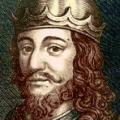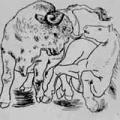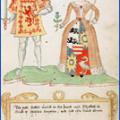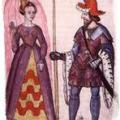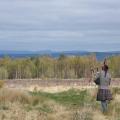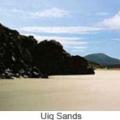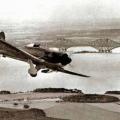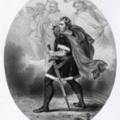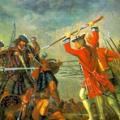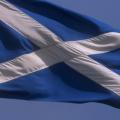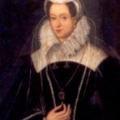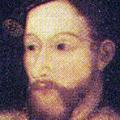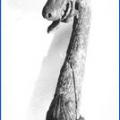Categories
Most Liked
Posted on July 17, 2013
by Amanda Moffet
by Amanda Moffet
Posted on May 12, 2013
by Chas Mac Donald
by Chas Mac Donald
Posted on August 29, 2013
by Amanda Moffet
by Amanda Moffet
Posted on February 7, 2013 by Donald | 14 views | comments
Robert I, (Roibert a Briuis in mediaeval Gaelic, Raibeart Bruis in modern Scottish Gaelic and Robert de Brus or Robert de Bruys in Norman French), usually known in modern English today as Robert the Bruce, was King of Scotland (1306 – 1329).
Although his paternal ancestors were of Scoto-Norman he...
Posted on February 7, 2013 by Donald | 13 views | 1 comments
Almost every Scottish loch has a monster, or at least stories about a monster. Perhaps they are just convenient tales told by grannies to stop local children playing too near the water? The most common monster in these watery warnings is the kelpie, the waterhorse.
The kelpie was a creature that li...
Posted on February 6, 2013 by Donald | 12 views | comments
After murdering John Comyn, the way was clear for Robert the Bruce to become King of Scotland without challenge.
His grandfather had first contested the Bruce family’s claim to the throne back in 1286. It was the hereditary office of the Earl of Fife to enthrone a Scottish king as they sat upon the...
Posted on February 7, 2013 by Donald | 11 views | comments
Robert II, King of Scots, called "the Steward", a title that gave the name to the House of Stewart (later spelled "Stuart"). He ruled from 1371 until his death. Robert was the sole son of Walter Stewart, 6th High Steward of Scotland and Marjorie Bruce, daughter of King Robert I of Scotland and his...
Posted on September 17, 2019 by Darrell Paden Hancock | 11 views | comments
Notes on one of the Most Obscure clans in Scotland's History. Clan MacFadyen, or MacPhaiden, or Patton, etc...
In doing research recently for my Bachelor's thesis on Gaelic culture in Scotland and Ireland, and in turn doing some digging into family history, I decided to pursue my Patton roots and lo...
Posted on April 19, 2013 by Amanda Moffet | 10 views | comments
Tha sinn a cruinneachadh an seo an diugh airson cuimhne a chumail air na thachair bho chionn da cheud tri-fichead sa seachd bliadhna air ais nuair a chaill faisg air da mhile duine – Gaidheil anns a mhor chuid dhiubh – am beatha agus a chaidh na ceudan eile an droch-leon ann am blar a mhair nas lugh...
Posted on February 6, 2013 by Donald | 9 views | 1 comments
Living around the same time as the legendary Nostradamus was a farm labourer called Coinneach Odhar. His prophesies are maybe not as well known as his contemporary but the alarming accuracy of his predictions has added to the sense of mystery that still exists around the Black Isle. Indeed many of...
Posted on February 7, 2013 by Donald | 9 views | comments
Dundas Castle was built in 1818 by renowned Scottish architect William Burn, situated in South Queensferry this castle is now the stately home of Sir Jack and his wife Lady Lydia Stewart-Clark.
The castle's commanding views over the Forth made it an integral part of Scotland’s defence in World ...
Posted on February 6, 2013 by Donald | 8 views | comments
When Duncan I took the Scottish throne, his grandfather had the blood of several relatives on his hands, having murdered the way clear for Duncan.
With such ill feeling as there must have been, Duncan would have been wise to pacify his remaining family, especially his senior cousin Thorfinn the Mig...
Posted on February 6, 2013 by Donald | 8 views | comments
Culloden Moor, known then as Drummossie Muir, was the site of the last pitched battle on the British mainland on 16 April 1746.
The Jacobites were pulling back into the Highlands, ending their siege of Stirling as they headed for Inverness. Despite their victory at Falkirk, Jacobite morale was de...
Posted on February 6, 2013 by Donald | 8 views | comments
Anyone who has browsed the Scotclans site can't help but notice that our logo incorporates the saltire (or at least a reversed out and colourised version of it). Take a walk through Edinburgh, Glasgow, Inverness or any other Scottish town and city and you will see countless saltire flags. They ado...
Posted on February 7, 2013 by Donald | 8 views | comments
Although the Stuart family had gained the Scottish throne through Marjory (daughter of Robert the Bruce), Mary became Queen only because all male alternatives had been exhausted.
Princess Mary Stuart was born at Linlithgow Palace, Linlithgow, West Lothian, Scotland, on December 7 or December 8, 1...
Posted on February 7, 2013 by Donald | 8 views | comments
The son of King James IV of Scotland, he was born in 1512, at Linlithgow Palace, West Lothian, and was still an infant when his father was killed at the Battle of Flodden Field on September 9, 1513. He was crowned in the Chapel Royal at Stirling Castle on September 21, 1513.
During his childhood,...
Posted on February 6, 2013 by Donald | 7 views | comments
The Viking invasions of Scotland heralded a new type of warfare.
By equipping their boats with keels, a significant number of warriors could be accommodated on sea journeys that presented little problem to the highly developed Norse navigational and rigging skills.
Their terror is first recorded i...
Posted on February 6, 2013 by Donald | 7 views | comments
There are many Scottish stories about selkies, but the most common is a tragic story of theft, love and loss.
Seals live close to people in many coastal and island communities in Scotland. They hunt the same fish, those big eyes and round heads look almost human in the water, and when they sing, yo...
Featured Articles
Most Discussed
Posted on July 16, 2013
by Amanda Moffet
by Amanda Moffet
Posted on February 6, 2013
by Donald
by Donald
Posted on July 17, 2013
by Amanda Moffet
by Amanda Moffet


 View More
View More View Less
View Less